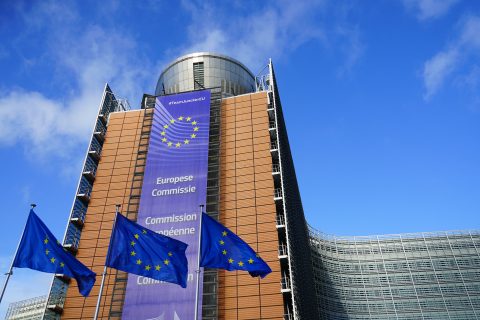What did we learn from the Connecting Europe Express?

The Connecting Europe Express has reached Paris, its final destination, after travelling for 36 days and crossing 26 countries and 33 borders. The emblematic initiative to celebrate the European Year of Rail has been unanimously crucial in showcasing rail’s benefits. What lessons did we learn from it?
“The Connecting Europe Express has been a rolling laboratory, revealing in real-time the many achievements of our Single European Rail Area and our TEN-T network to allow for seamless travel across our Union,” said Adina Valean, transport commissioner.
As RailFreight.com, we also onboarded the train on its trip between Amsterdam and Luxembourg. We came across different opinions during our journey, but also a consensus concerning one fact: that rail freight transport is essential, but there are still many things that need to improve immediately.
Fundamental pillars for the future
- Port-hinterland connectivity. To embrace the potential of rail freight and improve the European network’s efficiency, it is crucial to boost the connectivity between ports and hinterland hubs. The focus should not only lie on big ports but also on smaller ones. The port of Moerdijk is an excellent example since it heavily relies on rail and short-sea connections.
- Intermodal is the future. Shippers show a preference for intermodal rail since it provides flexibility compared to conventional rail. This is where the rail freight industry should focus—serving the shippers, their actual customers. And if all it takes is to provide more intermodal services, then so be it. More companies turning to intermodal will also offer other benefits too. For example, it could also facilitate connecting ports with the hinterland, as mentioned above.
- Decision making. Kris Peeters, vice-president of the European Investment Bank, claimed that “the needed investments by rail freight is something EIB can finance”. Additionally, Francois Bausch, deputy prime minister, minister of defence, mobility and public works of Luxembourg, discussed the “political courage that the EU needs more than funding”. In simple words, financial support can be found as long as the rail sector decides to work on its objectives and invest for a better future.
- Strong collaboration. Another interesting insight that Francois Bausch shared is the agreement between France and Luxembourg, where the latest will finance 50 per cent of the infrastructure upgrades of the first. “We will do it to resolve all the bottlenecks that our country faces there”, commented Bausch. This statement could set the example of how cooperation between different states could work to resolve rail-related problems. Could more countries move in this direction?
- Network utilisation and extension. Last but not least comes the issue of rail network utilisation. Heavily congested countries like the Netherlands should find ways to optimise their network usage. What could be some possible solutions? According to Kristian Schmidt, director of land transport at DG MOVE, more rail freight dedicated lines could help with decongestion. “Running longer trains is something the sector substantially needs,” underlined Gilbert Bal, responsible for rail freight at the port of Rotterdam. On top of that, interest parties should not only look forward to modernising the network. In contrast, they should focus on construction and extension investments. As Bausch highlighted, “we need more tracks, more capacity”.
You just read one of our premium articles free of charge
Want full access? Take advantage of our exclusive offer




